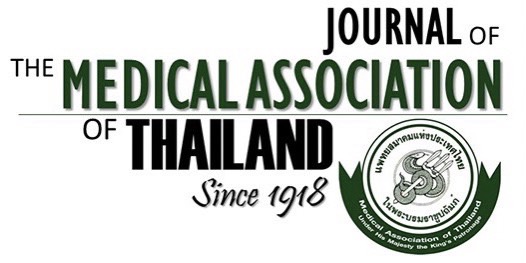Epidemiology, Clinical Characteristics, Sites of Infection and Treatment Outcomes of Mucocutaneous Candidiasis Caused by Non-Albicans Species of Candida at a Dermatologic Clinic
Charussri Leeyaphan MD*, Sumanas Bunyaratavej MD*, Suporn Foongladda PhD**, Chuda Rujitharanawong MD*, Pitchaya Maneeprasopchoke MD*, Theetat Surawan MD*, Chanai Muanprasat BEd*, Lalita Matthapan BSc*
Affiliation : * Department of Dermatology, Faculty of Medicine Siriraj Hospital, Mahidol University, Bangkok, Thailand ** Department of Microbiology, Faculty of Medicine Siriraj Hospital, Mahidol University, Bangkok, Thailand
Background : Increasing numbers of mucocutaneous infection due to non-albicans species of Candida (N-CA) had been
reported. Laboratory based studies showed multidrug resistance in N-CA population.
Objective : Demonstrate epidemiology, clinical characteristics, sites of infection, and treatment outcomes of mucocutaneous
candidiasis caused by N-CA at a dermatologic clinic, including statistical evaluation data between N-CA and C. albicans
infections.
Material and Method: This was a cross sectional study of outpatients with mucocutaneous infection due to Candida at
Dermatologic clinic between January 2012 and June 2014. Vaginal candidiasis was excluded. Demographic, clinical,
laboratory data, and treatment outcomes were collected.
Results : Among 760 patients presented with mucocutaneous candidiasis, 307 (40.4%) were infected with N-CA. The mean
age (SD) of N-CA patients was 63.6 (10.4) years and 74.6% were female. The majority of N-CA cases were isolated from
patients’ nails (n = 293, 95.4%) while eight (2.6%) were detected from their skin, and six (2%) from oral mucosa. Comparison
between N-CA and C. albicans, skin, and mucosa infection were significantly demonstrated in C. albicans groups (p<0.001).
Among nail infected patients, C. albicans infections had significant higher severity than the N-CA infection (p = 0.017).
Median time to cure in N-CA population was 169 days, which had no significant difference from C. albicans groups (211 days,
p = 0.499).
Conclusion : Forty percent of mucocutaneous candidiasis was caused by N-CA. Nails were the most common sites of N-CA
infections but N-CA was sometime found in skin and mucosa. Treatment outcomes of N-CA population were not significantly
different from those of C. albicans groups.
Keywords : Epidemiology, Clinical characteristics, Treatment outcomes, Mucocutaneous candidiasis, Non-albicans species of Candida



